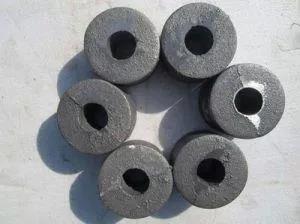National Service Hotline

The mass fraction of carbon in gray cast iron is usually 2.8%~3.6%, and it exists in the form of flake graphite.

Gray cast iron has almost no plasticity and toughness. Its tensile strength is also not high, generally lower than 400MPa. However, it has excellent processing performance, such as good cutting ability, good wear resistance, shock absorption, and low notch sensitivity. In addition, its low price makes it widely used in industrial production, mainly for various machine tool beds, boxes, shells and guide rails, cylinder bodies, etc.
In the microstructure of gray cast iron, except for flake graphite, the matrix structure is generally composed of three types: ferrite, ferrite+pearlite, and pearlite. The mechanical properties of gray cast iron mainly depend on the matrix; The strength, hardness, and wear resistance of gray cast iron with ferrite matrix are lower, but the plasticity is better; Gray cast iron with pearlite matrix has high strength and hardness, good wear resistance, but poor plasticity. The performance of gray cast iron with a ferrite+pearlite matrix is between the two.
The main problems during welding of gray cast iron are the problem of white spots and cracks.
(1) Under general welding conditions, due to the extremely fast cooling rate of the weld and heat affected zone, if the weld metal has the same composition as the base metal, the weld structure often forms a large number of eutectic carbides and secondary carbides. At this point, the weld seam structure is equivalent to the microstructure of white cast iron, hence it is called the white cast iron structure. The heat affected zone, due to its cooling rate often being higher than the weld seam, is more prone to forming a white microstructure. The appearance of such white tissue often leads to welding cracks in the weld seam and heat affected zone. Moreover, due to the presence of hard and brittle carbides, it is difficult to perform mechanical and cutting operations near the weld seam.
(2) The crack problem in gray cast iron welding is caused by the presence of flake graphite, whose tip is equivalent to an innate crack source. However, due to the presence of a large amount of quenched and hardened structure in the matrix, plasticity and toughness are poor, and cracks are prone to propagation. Even if there is no hardened structure present in the weld seam, when the welding constraint is high, cracks may occur at the tip and sides of the graphite sheet due to stress, as the flake graphite has almost no strength. This type of crack generally occurs below 400 ℃ and is called a hardening embrittlement crack, which belongs to a type of cold crack. When welding cast iron, this type of crack is prone to occur, and even the sound of cracking can be heard during welding. This type of crack is generally a transverse crack, sometimes extending to the entire weld cross-section.